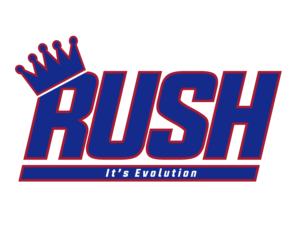Jason Pierre Paul has a back injury due to a herniated disc. New York Giant fans around the country are more than concerned about the dynamic pass-rushing star player and real news of his injury and surgery are scarce.
Early in the summer a blanket “12 weeks” was hung around the diagnosis and since then the New York Giants camp has been quiet, until now. JPP will start the year on the PUP list after a Micro Discectomy.
I know about this injury all too well. While I was fortunate to play college football I could never be compared to a professional athlete, yet…I had a very similar injury as the New York Giants, Pierre Paul. It’s an injury that changed my life dramatically.
Any injury to a professional athlete is a major concern and can disrupt a player’s career. A herniated disc is not a routine injury. As NFL players get bigger, stronger and faster some injuries, like ACL tears have become more common and less devastating. Diagnosis, surgery and rehab are much more concise and successful in todays sports medicine.
24-year old Pierre Paul was diagnosed with a disc injury, something he has dealt with for years. That means the discs in his back are already degenerative or compressed. Vertebral discs are the spinal column shock absorbers. The disc cushions the vertebral bones and allows the spine to twist and bend. JPP has shown his athleticism and flexibility on ESPN’s Sports Science which now makes me cringe because I am confident these type of actions lead to more irritation to the nerves that run along the spine.
The discs in your spine are made of two parts. A soft nucleus and a tough fibrous outer wall. The vertebral discs wear with age or can be damaged from traumatic injury or lifting something heavy. The disc wall weakens around the sensitive nerve fibers and if the soft nucleus pushes out it can press against the nerve root.
The pain is excruciating. The New York Giants will miss him greatly as he was one of the only shinning stars on the defensive unit.

Depending on where the disc is herniated(Cervical, Thoracic, Lunbar and Sacral) pain can radiate from the hip to the hamstring, down the leg to the foot or down one’s arm to the fingers tip. Nerve pain is unlike any other kind of pain and treatment comes at a cost. Rest and epidural shots, (which are no walk in the park) are only a temporary “anti inflammatory” solution.
The good news: At a time in the recent past back surgery meant you were shut down for a long time due to the “flaying” of your back. Rehab was crucial and nothing was guaranteed, especially for a professional athlete.
Today’s medicine allows patients to have spine and disc surgery through a small incision in the back and the procedure (Micro Discectomy)can be completed through a series of tubes allowing no cutting of the muscle. Instruments are used to remove degenerative or herniated portions of the disc nucleus. Depending on the size of the herniation will depend on how much disc will be removed.
The goal is to reduce pressure inside the disc, allow the nerve to breathe and to keep the spine stable.
The Bad News:
What most people don’t understand is once the inner disc pushes through the hard outer shell it never goes back in. After surgery, the pain is relieved because the nerve is no longer being pinched or pushed around; however, your other discs now must take the brunt of the load, causing a terrible amount of stress and pressure on the remaining healthy discs. So one might ask, how does a 275 pound defensive end crash into an offensive tackle, using his lower body for leverage and strength and not crumble due to having his disc compromised.
That type of trauma can eventually cause the remaining disc to squirt out or the rupture other discs.
In 2011, Fox News published a reported from Northwestern University about the likelihood of NFL lineman returning to the field after a spine procedure. Of the 66 players included in the study, 14 were treated non-surgically and 52 treated with surgery. Of those treated surgically, 42 (81 percent) returned to play in at least one game, although most played an average of 33 games over 3 years.
For me…running, biking and working out are a chore after having 85% of my disc(L5 S1) removed after years of running into guys bigger than me. Post Micro Discectomy becomes all about core strength…but it’s hard to accomplish anything when bone is hitting bone. Fusion may have worked for Peyton Manning after 3 neck surgeries; however, it’s not option for Jason Pierre Paul.
And in a smaller world where getting paid to play is not at stake, by choice…fusion is still no option for me either.
Craig J. Santucci | Senior Editor Giants Rush


